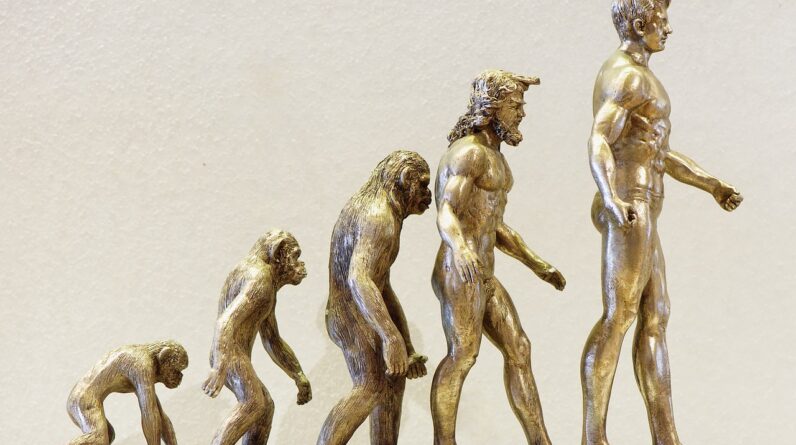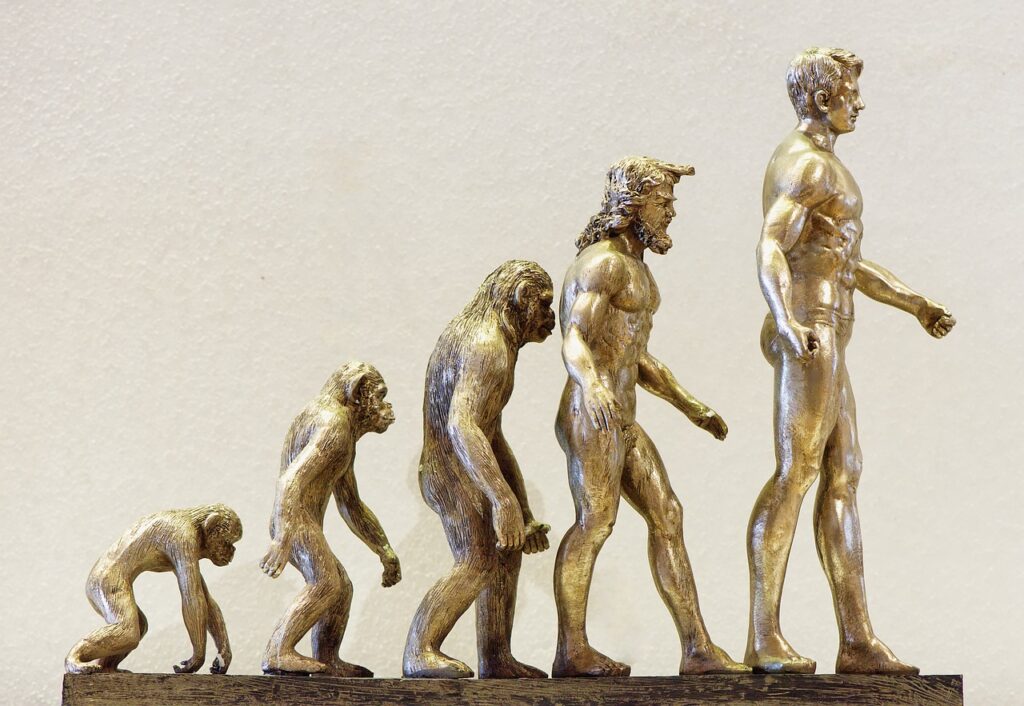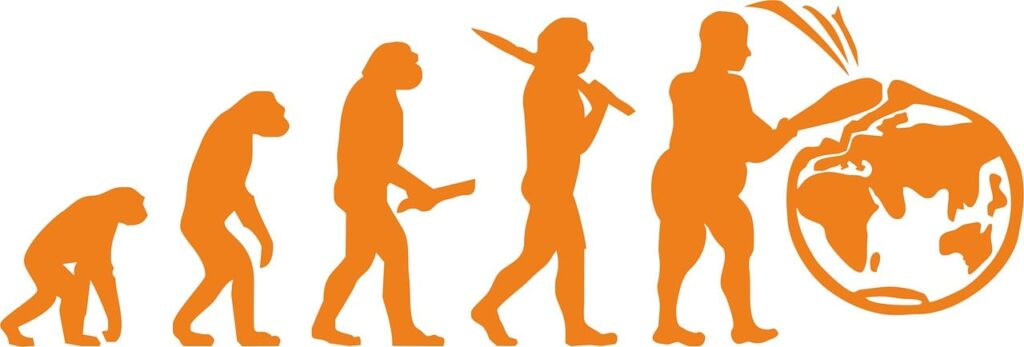
Imagine a time long ago when wildcats roamed the Earth freely, untamed and independent. Now fast forward to today, where these fierce creatures have transformed into our beloved domestic companions – the house cats. But have you ever wondered how this incredible evolution occurred? From their origins as fierce hunters tracking their prey, to becoming the purring snuggle buddies we adore, this article will reveal the fascinating journey of how domestic cats evolved from their wild ancestors, shedding light on the mysterious and enchanting transformation that took place over centuries. Get ready to be captivated by the tales of whiskers and claws.
Table of Contents
H2 Heading 1
H3 Subheading 1-1
Cats have been regarded as domesticated animals for thousands of years. But have you ever wondered how your beloved pet cat, with its gentle purring and playful antics, evolved from wildcats? It’s a fascinating journey that spans thousands of years of natural selection and human influence.
H3 Subheading 1-2
The domestication process of cats is believed to have started around 4,000 years ago in ancient Egypt. Unlike dogs, which were actively bred for specific purposes such as hunting or herding, cats domesticated themselves. Ancient Egyptians started settling in one place and formed agricultural communities. The abundance of stored grains attracted small rodents, which in turn attracted wildcats. These wildcats saw an opportunity for an easy meal and ventured closer to human settlements.
H3 Subheading 1-3
Over time, a mutually beneficial relationship developed between humans and cats. As humans provided a stable food supply, cats played a crucial role in controlling the rodent population, preventing damage to crops and food stores. Cats became valuable allies in protecting the agricultural surplus that became essential for human survival. Those wildcats that were more tolerant of human presence and had a natural inclination to hunt rodents were more likely to receive food and shelter from humans.
H2 Heading 2
H3 Subheading 2-1
The process of domestication began when wildcats started living in close proximity to humans. As these wildcats became more comfortable around humans, they gradually became less aggressive and more tolerant of human interaction. Natural selection favored cats that could coexist with humans, leading to the emergence of traits that we now associate with domestication, such as smaller size, reduced aggression, and increased sociability.
H3 Subheading 2-2
Human intervention in the process of cat domestication became more deliberate over time. As ancient civilizations advanced, cats became highly valued for their hunting abilities and companionship. Egyptians, in particular, revered cats and even worshipped them as gods. They actively bred for specific traits, such as different coat colors and patterns, leading to the development of various cat breeds that we see today.
H3 Subheading 2-3
It is important to note that not all cat species have successfully been domesticated. The domestic cat, scientifically known as Felis catus, descended from the African wildcat (Felis lybica). This particular subspecies showed a higher level of tolerance and adaption to human presence, making it more susceptible to domestication. Other wildcat species, such as the European wildcat (Felis silvestris), have not undergone the same domestication process and are not considered domestic cats.

H2 Heading 3
H3 Subheading 3-1
Significant advancements in genetic research have shed light on the process of cat domestication. DNA analysis has shown that domestic cats are closely related to their wild ancestors, sharing a high degree of genetic similarity. Even today, domestic cats retain many traits inherited from their wild ancestors, such as their carnivorous diet, keen senses, and instinctual hunting behaviors.
H3 Subheading 3-2
Interestingly, despite thousands of years of domestication, cats still maintain a level of individualistic behavior and independence. Unlike dogs, which have undergone extensive artificial selection resulting in a wide range of breeds with distinct appearances and temperaments, cats have remained relatively genetically homogeneous. This is because cat domestication is a more recent and less intense process compared to dogs.
H3 Subheading 3-3
The evolution of domestic cats showcases the intricate relationship between humans and animals. Cats have become beloved companions, providing comfort and companionship in countless households around the world. Understanding their evolutionary journey from wildcats helps us appreciate their unique traits and the importance of preserving their natural instincts and well-being.
H2 Heading 4
H3 Subheading 4-1
Despite their domestication, cats still retain many of the characteristics that allowed their wild ancestors to survive. One notable trait is their exceptional hunting skills. Even well-fed indoor cats often display a strong instinct to catch prey, such as small rodents or insects. This behavior is a testament to their evolutionary history as proficient hunters.
H3 Subheading 4-2
Another feature inherited from their wild ancestry is their nocturnal nature. Wildcats, like their domestic counterparts, are crepuscular animals, most active during dawn and dusk. This behavior enabled them to hunt efficiently, taking advantage of the low-light conditions when their prey was also active.
H3 Subheading 4-3
The visual and auditory prowess of domestic cats can also be attributed to their evolution from wildcats. Like their wild ancestors, domestic cats have excellent night vision due to a specialized structure in their eyes, called the tapetum lucidum, which enhances their ability to see in low-light conditions. Their acute hearing allows them to detect even the faintest sounds, an adaptation that aided in hunting and avoiding predators in the wild.

H2 Heading 5
H3 Subheading 5-1
In addition to their physical traits, cats also exhibit various behaviors that have evolutionary origins. For instance, cats have a natural inclination to mark their territory by scratching. This behavior stems from their wild ancestors’ need to leave scent markings as a way to communicate with other cats and establish their presence in their territory.
H3 Subheading 5-2
Another behavior ingrained in their evolutionary history is their self-grooming routine. Wildcats, like domestic cats, spend a significant amount of time grooming themselves to keep their fur clean and free from parasites. Self-grooming also helps distribute their natural oils throughout their coat, providing insulation and waterproofing.
H3 Subheading 5-3
Cats’ secretive nature can be traced back to their wild ancestry. Wildcats relied on their ability to camouflage and hide from predators, which led to the development of their solitary and elusive behavior. Even though domestic cats live in close proximity to humans, they still exhibit a preference for quiet and secluded spaces where they can retreat when they feel threatened or overwhelmed.
H2 Heading 6
H3 Subheading 6-1
Over the centuries, cats have transcended their role as mere hunters and have become beloved family companions. Their unique personalities and the bonds they form with their human caregivers are a testament to their adaptability and intelligence. They continue to bring joy and warmth to countless households, enriching our lives with their cuddles and playful antics.
H3 Subheading 6-2
In recent years, the study of cat behavior and genetics has deepened our understanding of their evolutionary journey. By unraveling the genetic makeup of domestic cats and comparing it to that of their wild relatives, scientists have gained insights into the specific genetic changes that have occurred during the domestication process.
H3 Subheading 6-3
As we appreciate the wonder of our domestic feline companions, it is essential to acknowledge the importance of responsible cat ownership. Ensuring their health, welfare, and environmental enrichment is crucial in providing them with a fulfilling life. By understanding their evolutionary history and natural behaviors, we can create an environment that supports their uniqueness while also meeting their physical and emotional needs.

H2 Heading 7
H3 Subheading 7-1
In conclusion, the journey of how domestic cats evolved from wildcats is a fascinating tale of coexistence and mutual benefit. From their humble beginnings as opportunistic creatures seeking food near human settlements, cats gradually adapted to live harmoniously with humans. Through natural selection and human intervention, they underwent a process of domestication, resulting in the wide variety of domestic cat breeds we have today.
H3 Subheading 7-2
While domestication has brought about changes in their physical appearance and behavior, cats still retain many of their wild instincts and traits. Their evolution from wildcats has made them exceptional hunters, gifted with keen senses and a natural inclination to mark their territory. Understanding and respecting their evolutionary history is vital in ensuring their health, happiness, and well-being as our cherished feline companions.
H3 Subheading 7-3
So, the next time you cuddle with your adorable pet cat, take a moment to appreciate the incredible journey they have taken from wildcats to domesticated companions. They are a testament to the power of evolution and the unique bond that can form between humans and animals. Cherish their independence, respect their natural instincts, and continue to provide them with love and care, just as they have provided us with their loyal companionship for centuries.
H2 Heading 8
H3 Subheading 8-1
As we delve deeper into the world of cats and their evolution, it is important to note that our understanding is constantly evolving as well. Ongoing research and scientific studies continue to uncover new insights into the domestication process and the complexities of feline behavior.
H3 Subheading 8-2
One particularly fascinating area of study is the comparison of the genomes of wildcats and domestic cats. By identifying the specific genetic changes that occurred during domestication, researchers are gaining a better understanding of the traits and behaviors that distinguish domestic cats from their wild counterparts.
H3 Subheading 8-3
Understanding the evolutionary history of cats not only helps us appreciate their unique nature but also has broader implications for animal conservation. Wildcats play a crucial role in maintaining the delicate balance of ecosystems around the world. By studying their evolution and behavior, we can develop strategies to support their conservation and foster a harmonious coexistence between humans and wild feline species.
H2 Heading 9
H3 Subheading 9-1
The domestication of cats from wildcats is a testament to the power of our connection with animals and our ability to influence their evolution. It is a story that spans thousands of years and continues to unfold before our eyes. Through our shared history, cats have become an integral part of our lives, captivating us with their beauty, grace, and independent spirit.
H3 Subheading 9-2
As we strive to understand our feline companions better, we uncover not only their evolutionary past but also the deep bond they form with their human caregivers. They provide us with emotional support, companionship, and a unique connection that enriches our lives in countless ways.
H3 Subheading 9-3
So, the next time you look into the eyes of your beloved cat, remember the intricate journey they have taken, from wildcat to cherished family member. Embrace their innate uniqueness, nurture their natural instincts, and celebrate the remarkable story of how domestic cats evolved from wildcats. They are not just pets; they are living testaments to the wonders of evolution and the enduring connection between humans and animals.
H2 Heading 10
H3 Subheading 10-1
In conclusion, the evolution of domestic cats from wildcats is a remarkable tale of adaptation, coexistence, and the enduring bond between humans and animals. From early encounters near ancient settlements, cats gradually developed a relationship with humans based on mutual benefit.
H3 Subheading 10-2
Through natural selection and human intervention, cats became suitable companions, adept at hunting rodents and providing comfort to humans. Despite their domestication, they still retain many of their wild instincts and physical attributes, reminding us of their remarkable journey from wildcat to beloved pet.
H3 Subheading 10-3
As cat owners and enthusiasts, it is important to honor and respect their evolutionary history. By understanding their natural behaviors, providing appropriate care, and creating an environment that supports their well-being, we can ensure that our feline companions are happy, fulfilled, and continue to enrich our lives for years to come.
